
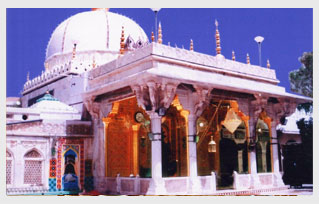
Dargah of Khwaja Muin-ud-din Chishti
Ajmer, India
Situated at the foot of a hill and in the old part of town is the dargah of Khwaja Muin-ud-din Chishti, India's most important Muslim pilgrimage site. This is the tomb of a Sufi saint Khwaja Muin-ud-din Chishti, who came to Ajmer from Persia in 1192 and died here in 1236. The tomb gained its significance during the time of the Mughals - many emperors added to the buildings here. Construction of the shrine was completed by Humayun, and the gate was added by the nizam (ruler of Hyderabad).
Akbar used to make the pilgrimage to the dargah from Agra every year. You have to cover your head in certain parts of the shrine, so remember to take a scarf or cap.
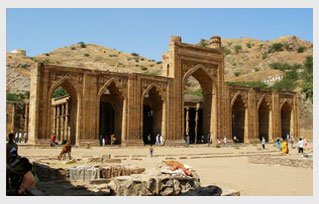
Adhai-din-ka-Jhonpra
Ajmer, India
Beyond the dargah, on the town outskirts, are the extraordinary ruins of the Adhai-din-ka-Jhonpra mosque. According to legend, construction in 1153 took 2½ days. Others say it was named after a festival lasting 2½ days. It was built as a Sanskrit college, but in 1198 Mohammed of Ghori seized Ajmer and converted the building into a mosque by adding a seven-arched wall covered with Islamic calligraphy in front of the pillared hall.
Although in need of restoration, it's an exquisite piece of architecture, with soaring domes, pillars and a beautiful arched screen, largely built from pieces of Jain and Hindu temples.
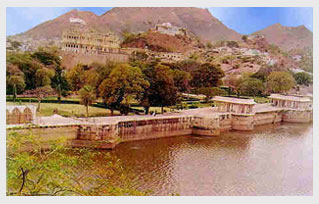
Ana Sagar
Ajmer, India
This large lake, created in the 12th century by damming the River Luni, is set against a blue-grey hilly spine that merges into its surface. On its bank is a park, the Subash Bagh & Dault Bagh, containing a series of marble pavilions erected in 1637 by Shah Jahan. There are good views towards Ajmer from the hill beside the Dault Bagh, particularly at sunset. It's a popular place for an evening stroll, though you may get quite a lot of attention. Pedalos and motorboats can be hired from the Fun N Joy Boat Club.
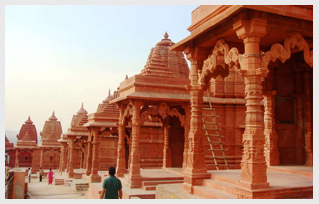
Nasiyan (Red) Temple
Ajmer, India
This marvellous Jain temple was built in 1865. It's also known as the Golden Temple, due to its amazing display - its double-storey temple hall is filled with a huge golden diorama depicting the Jain concept of the ancient world, with 13 continents and oceans, the intricate golden city of Ayodhya, flying peacock and elephant gondolas, and gilded elephants with many tusks. The hall is decorated with gold, silver and precious stones.
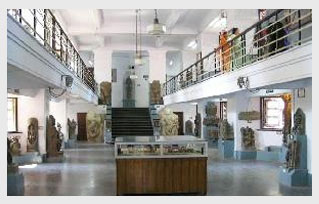
Government Museum
Ajmer, India
Akbar built this imposing palace in 1570 – partly as a pleasure retreat, but mainly to keep a watchful eye on local rulers. It was here, on 10 January, 1616, that Sir Thomas Roe, ambassador of King James 1 of England, was given the first official audience by the Emperor Jehangir. Akbar's Palace houses the government museum, which has a small collection of stone sculptures, weapons and miniature paintings.
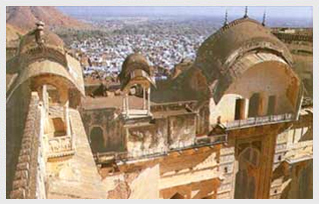
Taragarh Fort
Ajmer, India
The giant fort stands guarding the city. It has six gates. The fort also has Miran Saheb ki Dargha who was the governor of the fort and laid down his life in an encounter. It gives a panoramic view of the city situated in Nagpahari of Aravalli ranges, this fort has immense archaeological and historical importance.
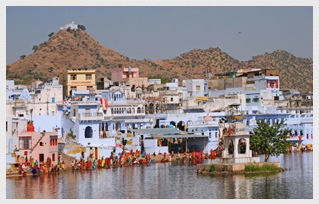
Pushkar
Ajmer, India
Pushkar is a sacred town for the Hindus, situated 11 kms. to the North-West of Ajmer. The charm of this sleepy, lakeside settlement so captivated the great Indian poet, Kalidas,that it found a place in his classic, Abhigyan Sakuntalam. The Great Hindu epics of Mahabharat and Ramayana make references to this religious place regarded to be Adi Tiratha. Evidence points to its having existed during the fourth century B.C. lake in the inhospitable surroundings of a desert is no less than a miracle.
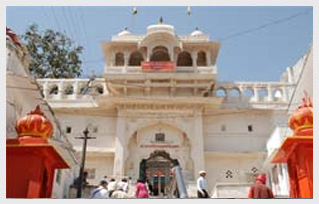
Brahma Temple
Ajmer, India
The most famous is the Brahma Temple, said to be the only temple in the world dedicated to this deity. It stands on a high plinth with the Marble steps leading up to it. A silver turtle is set on the floor facing the Sanctum-Sanctorum or Girbha-griha. Around the turtle the Marble floor is inset with hundreds of silver coins. Coins engraved with donors names are also embedded in the walls. Peacocks adorn the temple walls as they are supposed to be the vehicle of lord Brahma's consort Saraswati. A small image of the milkmaid Gayatri, flanks the four-faced image of lord Brahma and is called Chaumurti The sanctuary has silver doors inside a carved marble gateway.

 +91-0120-4779150 (10AM - 6PM)
+91-0120-4779150 (10AM - 6PM)